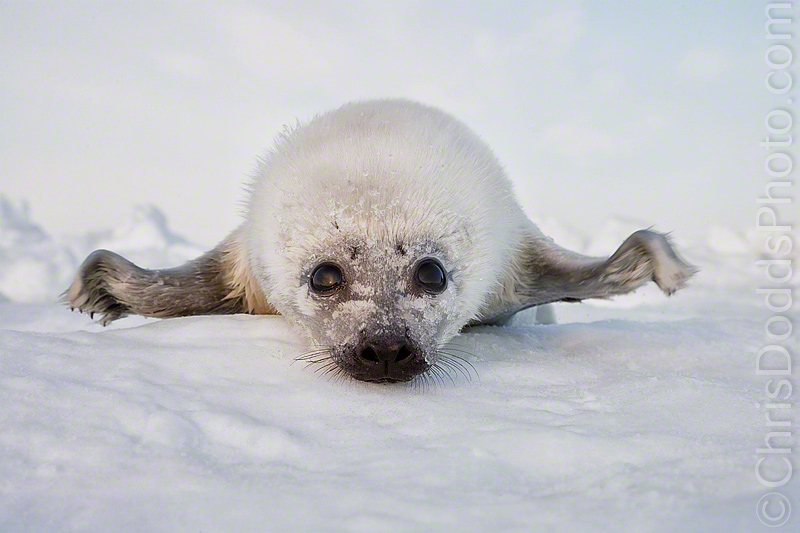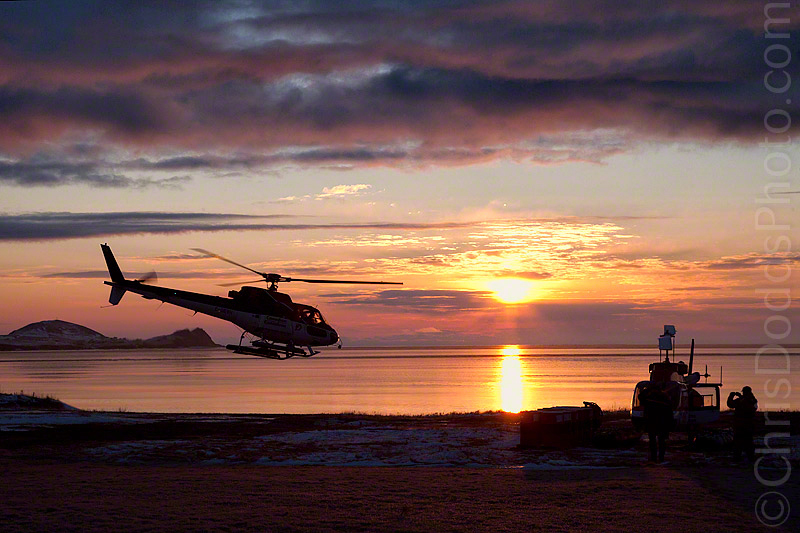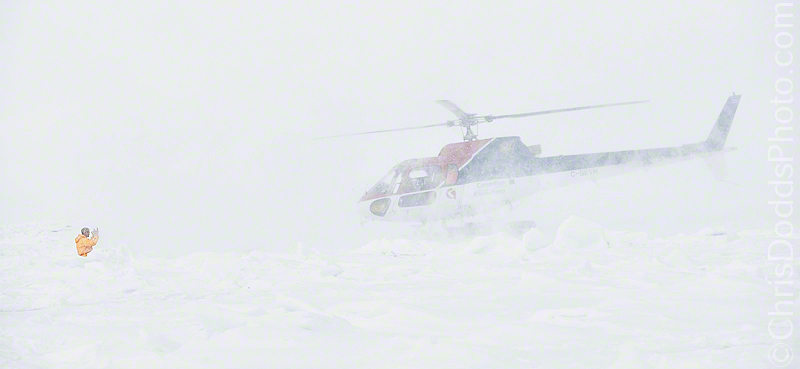 Harp Seal WHITECOAT (Pagophilus groenlandicus, phoque de Groenland) On pack ice in The Gulf of St. Lawrence, off the Magdalen Islands (Îles de la Madeleine), Quebec. Image Copyright ©Christopher Dodds. Canon 1Ds MK II, Canon 24-105mm f/4L IS USM @ 58mm ISO 400 f/9 @ 1/320s Manual Mode. PURCHASE A PRINT or LICENSE IMAGE FOR PUBLICATION HERE.
Harp Seal WHITECOAT (Pagophilus groenlandicus, phoque de Groenland) On pack ice in The Gulf of St. Lawrence, off the Magdalen Islands (Îles de la Madeleine), Quebec. Image Copyright ©Christopher Dodds. Canon 1Ds MK II, Canon 24-105mm f/4L IS USM @ 58mm ISO 400 f/9 @ 1/320s Manual Mode. PURCHASE A PRINT or LICENSE IMAGE FOR PUBLICATION HERE.
Here's a Harp Seal Pup from a trip I made to the Magdalen Islands (Îles de la Madeleine) in the Gulf of the St. Lawrence in 2007. I just re-worked the image using my current workflow before sending it off for publication. This is one of those images that still grabs my attention when I look into those eyes…hard to imagine what could be in it's future…
Harp seals pups are known as ‘whitecoats’ due to their thick, white, insulating fur, which becomes whiter in the first two weeks of life. After two weeks, this fur begins to moult, revealing the silver-grey and black fur beneath
Flying out over the Gulf of the St. Lawrence in a helicopter was nowhere near how amazing it was to spend time with these whitecoats. I'm thinking of organizing a workshop in early March, 2014. Shoot me an email if you re interested in more details. chris@chrisdoddsphoto.com
 A Canadian Bell Helicopter takes flight from the The Magdalen Islands (Îles de la Madeleine) at sunrise to take a group of nature photographers out to photograph the Harp Seals on the pack ice in the middle of the Gulf of St. Lawrence in Quebec, Canada. Image Copyright ©Christopher Dodds. Canon 1Ds MK II, Canon 24-105mm f/4L IS USM @ 65mm ISO 250 f/9 @ 1/400s Manual Mode. PURCHASE A PRINT or LICENSE IMAGE FOR PUBLICATION HERE.
A Canadian Bell Helicopter takes flight from the The Magdalen Islands (Îles de la Madeleine) at sunrise to take a group of nature photographers out to photograph the Harp Seals on the pack ice in the middle of the Gulf of St. Lawrence in Quebec, Canada. Image Copyright ©Christopher Dodds. Canon 1Ds MK II, Canon 24-105mm f/4L IS USM @ 65mm ISO 250 f/9 @ 1/400s Manual Mode. PURCHASE A PRINT or LICENSE IMAGE FOR PUBLICATION HERE.
 A Canadian Bell Helicopter lands on the pack ice in the middle of the Gulf of St. Lawrence near the Magdalen Islands (Îles de la Madeleine) in The Gulf of St. Lawrence in Quebec while being directed by an ice guide. Image Copyright ©Christopher Dodds. Canon 1Ds MK II, Canon 24-105mm f/4L IS USM @ 65mm ISO 250 f/9 @ 1/400s Manual Mode. PURCHASE A PRINT or LICENSE IMAGE FOR PUBLICATION HERE.
A Canadian Bell Helicopter lands on the pack ice in the middle of the Gulf of St. Lawrence near the Magdalen Islands (Îles de la Madeleine) in The Gulf of St. Lawrence in Quebec while being directed by an ice guide. Image Copyright ©Christopher Dodds. Canon 1Ds MK II, Canon 24-105mm f/4L IS USM @ 65mm ISO 250 f/9 @ 1/400s Manual Mode. PURCHASE A PRINT or LICENSE IMAGE FOR PUBLICATION HERE.




